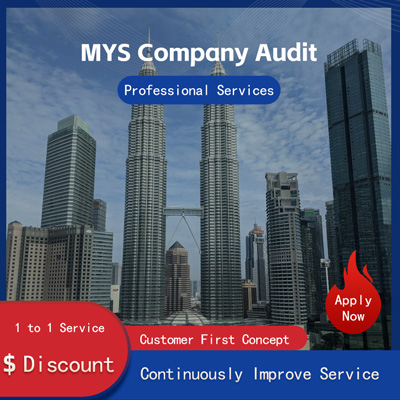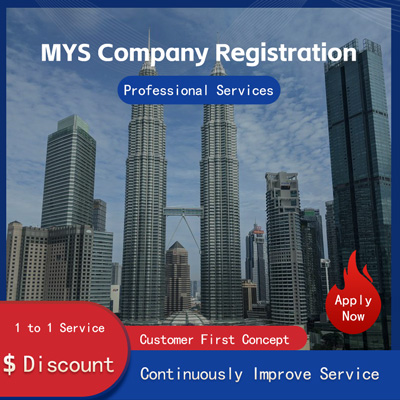
How Can Domestic Companies Successfully List on U.S. Stock Markets? A Comprehensive Guide to the Entire IPO Process
How to List Your Company on U.S. Stock Markets A Comprehensive Guide for Chinese Enterprises
In recent years, with sustained economic growth and the deepening of international strategies, an increasing number of Chinese enterprises have turned their attention to overseas capital markets, particularly the U.S. financial system. The U.S. stock market, known for its mature regulatory framework, high liquidity, and broad participation from global investors, has become a key platform for overseas fundraising by Chinese companies. Despite some regulatory tensions between China and the U.S. in recent years, many Chinese companies have still successfully gone public in the U.S. For example, in July 2025, NewLink, a provider of EV charging solutions, successfully listed on NASDAQ, becoming one of the representative IPO cases of that year.

So, how can Chinese companies successfully list in the U.S., and what are the key steps involved? This article provides a comprehensive overview of the U.S. listing process for Chinese enterprises, covering preparation, legal structure, auditing and compliance, roadshow and issuance, and post-listing maintenance.
1. Clarify Listing Goals and Select the Appropriate Market Tier
The major U.S. stock exchanges include the New York Stock Exchange NYSE, NASDAQ, and the American Stock Exchange AMEX. Among these, NASDAQ is often preferred by emerging companies due to its technology-friendly environment and relatively lower listing requirements.
Before pursuing a U.S. listing, companies must first define their objectives-such as raising capital, enhancing international brand recognition, or providing an exit mechanism for shareholders. They should also evaluate whether their financial condition meets the minimum listing standards of the chosen exchange. NASDAQ, for instance, sets requirements related to market capitalization, shareholder equity, and revenue. Companies must choose the appropriate path, such as an initial public offering IPO or a merger with a special purpose acquisition company SPAC.
2. Establish a Suitable Legal and Equity Structure
Due to differences between Chinese and U.S. legal systems, Chinese companies typically need to restructure their legal and equity frameworks before listing in the U.S. A common approach is to establish an offshore holding company-often in the Cayman Islands-and use a Variable Interest Entity VIE structure to control the domestic operating entity. This allows companies to circumvent restrictions on foreign ownership in certain sectors.
For example, many Chinese internet companies have historically used the VIE model to list overseas. While this structure faced some regulatory scrutiny in 2025, it was not completely banned. In 2025, the China Securities Regulatory Commission CSRC and other authorities introduced the Trial Measures for the Administration of Overseas Issuance and Listing of Securities by Domestic Enterprises, which further standardized the overseas listing process and emphasized a filing-based regulatory system. Companies are now required to file with regulators in advance and fulfill disclosure obligations.
At the structure design stage, companies should consult legal and financial professionals to ensure compliance with both Chinese and U.S. regulations, particularly with regard to SEC disclosure requirements.
3. Financial Audit and Compliance Preparation
Companies listing in the U.S. must undergo audits conducted in accordance with the standards of the Public Company Accounting Oversight Board PCAOB. Previously, audit-related disputes between China and the U.S. posed challenges for some Chinese companies seeking to list. However, in 2025, the U.S. and China signed an audit oversight cooperation agreement, allowing PCAOB to resume inspections of Chinese accounting firms, thereby removing a key obstacle.
Companies must prepare financial statements in accordance with either U.S. Generally Accepted Accounting Principles GAAP or International Financial Reporting Standards IFRS, ensuring the accuracy and completeness of financial data. Additionally, they must establish internal control systems that meet U.S. listing requirements, such as those outlined in Section 404 of the Sarbanes-Oxley Act SOX.
4. Submit IPO Application and Navigate SEC Review
The core step in the U.S. listing process is submitting the IPO registration document-Form F-1 for foreign private issuers or S-1 for U.S. domestic issuers-to the U.S. Securities and Exchange Commission SEC. The document must include detailed disclosures about the company’s business model, financial condition, risk factors, governance structure, and more.
The SEC typically conducts multiple rounds of review, raising questions and requesting additional information. For example, a biotech company that successfully listed in 2025 went through several rounds of SEC feedback, with questions covering intellectual property, clinical trial data, and related-party transactions. The review process can last several months, and companies must work closely with legal counsel and auditors to ensure accurate and compliant responses.
5. Roadshow and Pricing the IPO
After receiving SEC approval, the company enters the roadshow phase, during which it promotes its business and investment value to potential investors. These roadshows are typically held in the U.S. and Europe and are organized by underwriters. Company executives participate in multiple meetings to present the company’s growth prospects.
Following the roadshow, the company and underwriters negotiate the final offering price and size. This process is influenced by market conditions, industry trends, and investor sentiment. For example, the U.S. IPO market was sluggish in the first half of 2025 but gradually recovered in the second half, with several Chinese IPOs receiving strong investor interest.
6. Post-Listing Compliance and Information Disclosure
A successful IPO is just the beginning. Once listed, companies must continue to meet disclosure obligations, including filing quarterly reports Form 10-Q, annual reports Form 10-K, and current event disclosures Form 8-K. They must also comply with corporate governance rules set by NASDAQ or the NYSE, such as board independence and audit committee requirements.
Companies should also be mindful of anti-short selling mechanisms and investor relations management, establishing strong communication channels with the capital markets to maintain stock performance and market reputation.
Conclusion
Listing in the U.S. presents both opportunities and challenges for Chinese enterprises. While it offers access to a global financing platform, it also demands high standards of corporate governance, compliance capabilities, and international vision. Against the backdrop of deepening regulatory cooperation between China and the U.S., eligible companies still have the opportunity to achieve a U.S. listing through a compliant path. With early planning, strategic structuring, and the support of professional teams, Chinese companies can indeed write their own success stories on Wall Street.
Helpful (0)
No help (0)
Still have questions after reading? More than 98,000 users have contacted us. Please fill in the following information to obtain business information.

Service Scope
MoreRecommended for You
- Do You Really Know How to Name a Company in Singapore? Must-Know Tips Inside!
- How to Start a Company in Singapore? A Step-by-Step Guide to Registration Requirements and Process!
- How Much Does It Cost to File Taxes for a Singapore Company? Everything You Need to Know - Are You Ready?
- Don't Panic! Missed Your Singapore Company's Annual Filing? Here’s How to Fix It Easily
- How Much Does It Cost to Register an Offshore Company in Singapore? A Complete Guide to the Process
- How Much Does a Company Audit in Singapore Cost? Here’s What You Need to Know
- How to Handle Annual Review for Singapore Companies? A Simple Guide to the Process and Key Points
- How Much Does It Cost to Start a Company in Singapore? A Clear Breakdown of All Fees and Hidden Expenses
- A Complete Guide to Opening a Personal Bank Account in Singapore What You Need to Know First
- What You Need to Know Before Opening a Private Bank Account in Singapore
- A Complete Guide to Company Registration and Annual Compliance in Singapore Essential Steps and Practical Tips for Businesses
- Step-by-Step Guide to Registering a Company in Singapore - Turn Your Entrepreneurial Dream into Reality with Ease
- Starting a Company in Singapore An Easy First Step Toward Going Global
- How Much Does Annual Audit of a Singapore Company Cost? Here’s a Clear Breakdown!
- What’s the phone number for the Singapore Companies Registry? Here’s a step-by-step guide to quickly solve your registration questions
- Thinking of starting a company in Singapore? Here are the key requirements you should know first!
- Is It Expensive to Register a Company in Singapore? We Break It Down for You!
- DBS Bank Hong Kong A Trusted Bridge to Global Finance
- How Much Does Annual Compliance for a Singapore Offshore Company Cost? Hidden Fees and Key Tips You Should Know
- How Much Does It Cost to Register a Company in Singapore? A Clear Breakdown - You’ll Get It After Reading This


 ONE
ONE








Customer Reviews
Small *** Table
December 12, 2024The experience was very good. I was still struggling to compare it with other companies. I went to the site a few days ago and wanted to implement it as soon as possible. I didn't expect that everything exceeded my expectations. The company is very large, with several hundred square meters. The employees are also dedicated and responsible. There is also a wall of certificates. I placed an order on the spot. It turned out that I did not make a wrong choice. The company's service attitude is very good and professional. The person who contacted me explained various things in detail in advance. After placing the order, the follow-up was also very timely, and they took the initiative to report the progress to me. In short, I am very satisfied and recommend this company!
Lin *** e
December 18, 2024When I first consulted customer service, they recommended an agent to me. They were very professional and patient and provided excellent service. They answered my questions as they came in. This 2-to-1 service model is very thoughtful. I had a lot of questions that I didn’t understand, and it’s not easy to register a company in Hong Kong. Fortunately, I have you.
t *** 7
December 19, 2024I originally thought that they only did mainland business, but I didn’t expect that they had been doing Hong Kong business and were doing very well. After the on-site interview, I decided to ask them to arrange the registration of my Hong Kong company. They helped me complete it very quickly and provided all the necessary information. The efficiency was awesome. It turns out that professional things should be done by professionals.👍
b *** 5
December 16, 2024In order to register a company in Hong Kong, I compared many platforms and stores and finally chose this store. The merchant said that they have been operating offline for more than 10 years and are indeed an old team of corporate services. The efficiency is first-class, and the customer service is also very professional.